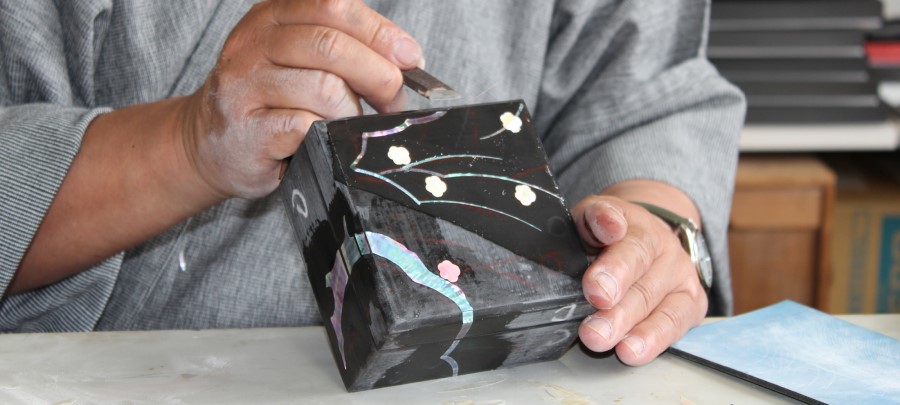
The DEN brand was born through the collaboration of a Amano Lacquerware, a workshop for high quality lacquerware, and Japanese designer Satoshi Umeno. Traditional crafts from Takaoka city using abalone shell and Japanese lacquer have been applied to glass.
The result is a unique set of modern tableware applying Japanese asthetics to contemporary glassware. A simple design of black or red lacquer on transparent glass with a small silver accent using abalone shell. Due to its unique design DEN tableware can be combined with Western or Asian style table decoration.
The DEN tumber is part of the "THE WONDER 500" - a selection of great products from Japan made by the Japanese Ministry of Economic. These products are promoted on various exhibitions outside of Japan.

Satoshi Umeno worked on urban design and furniture projects before starting his own design company UMENODESIGN in 2003. Currently based in Tokyo Umeno continues to release titles in Japan and abroad.
His interests and work cover broad fields such as interior, fashion, web, graphic and many more.

Takaoka lacquerware began at the beginning of the Edo period (14th year of Keicho (1609)), when Maeda Toshinaga, the second lord of Kaga Domain, built Takaoka Castle in Takaoka City, and had him make everyday items such as armor, chests of drawers, and sets. Later, techniques such as dui vermilion and dui black were introduced from China, and various techniques such as sculpture painting, rust painting, raden, and zensei were created using a variety of colored lacquers, and Takaoka lacquerware has developed as a famous lacquerware production area. These techniques were gathered at the gorgeous Mikurumayama used in Takaoka festivals, and have been firmly rooted and developed in the townspeople's culture. Takaoka lacquerware was designated as a national traditional craft in 1975.
The unique DEN prodcution requires a stable hand and many years of experience.






